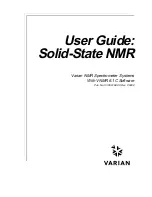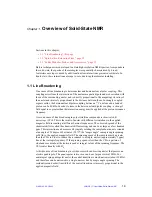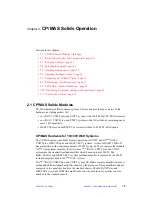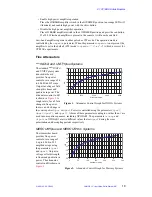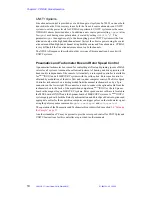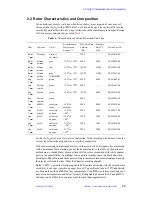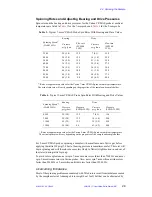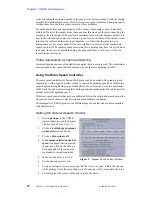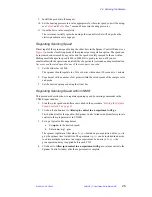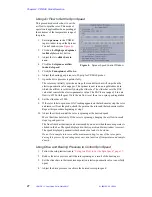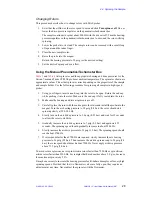
01-999162-00 C0402
VNMR 6.1C User Guide: Solid-State NMR
14
Chapter 1.
Overview of Solid-State NMR
Sections in this chapter:
• 1.1 “Line Broadening,” this page
• 1.2 “Spin-Lattice Relaxation Time,” page 15
• 1.3 “Solids Modules, Probes, and Accessories,” page 15
Before techniques were developed to obtain high-resolution NMR spectra of compounds in
the solid state, the spectra of these samples were generally characterized by broad,
featureless envelopes caused by additional nuclear interactions present in solid state. In
liquid state, these interactions average to zero due to rapid molecular tumbling.
1.1 Line Broadening
One cause of line broadening is heteronuclear and homonuclear dipolar coupling. This
coupling arises from the interaction of the nuclear magnetic dipole under observation with
those of the surrounding nuclei, and is directly proportional to the magnetogyric ratios of
the nuclei and inversely proportional to the distance between them. In strongly coupled
organic solids, the heteronuclear dipolar coupling between a
13
C nucleus and a bonded
proton can be 40 kHz. In order to remove the heteronuclear dipolar coupling, a strong rf
field equal to or greater than the interaction energy must be applied at the proton resonance
frequency.
A second cause of line broadening in polycrystalline compounds is chemical shift
anisotropy (CSA). This is the result of nuclei with different orientations in the applied
magnetic field resonating at different Larmor frequencies. The observed spread of the
chemical shifts is called the chemical shift anisotropy and can be as large as a few hundred
ppm. This interaction can be removed by rapidly rotating the sample about an axis oriented
at an angle of 54 degrees 44 minutes (54.73
°
, the “magic angle” in magic angle spinning,
or MAS to the applied magnetic field. The spinning speed of the sample must be greater
than the CSA in order to reduce the resonance to a single, narrow (approximately 1 ppm)
line at the isotropic frequency. If the spinning speed is less than the CSA, a pattern of
sidebands occurs about the isotropic peak at integral values of the spinning frequency. The
CSA scales linearly with B
0
.
A third source of line broadening in solids occurs when observing nuclei that possess an
electric quadrupole. The quadrupolar interaction can be as large as several MHz. For
nonintegral spin quadrupolar nuclei, the central transition is much narrower (about 10 kHz)
and therefore can be narrowed to a single, narrow line by magic angle spinning. The
residual (second order) linewidth of the central transition is inversely proportional to the
applied magnetic field.


